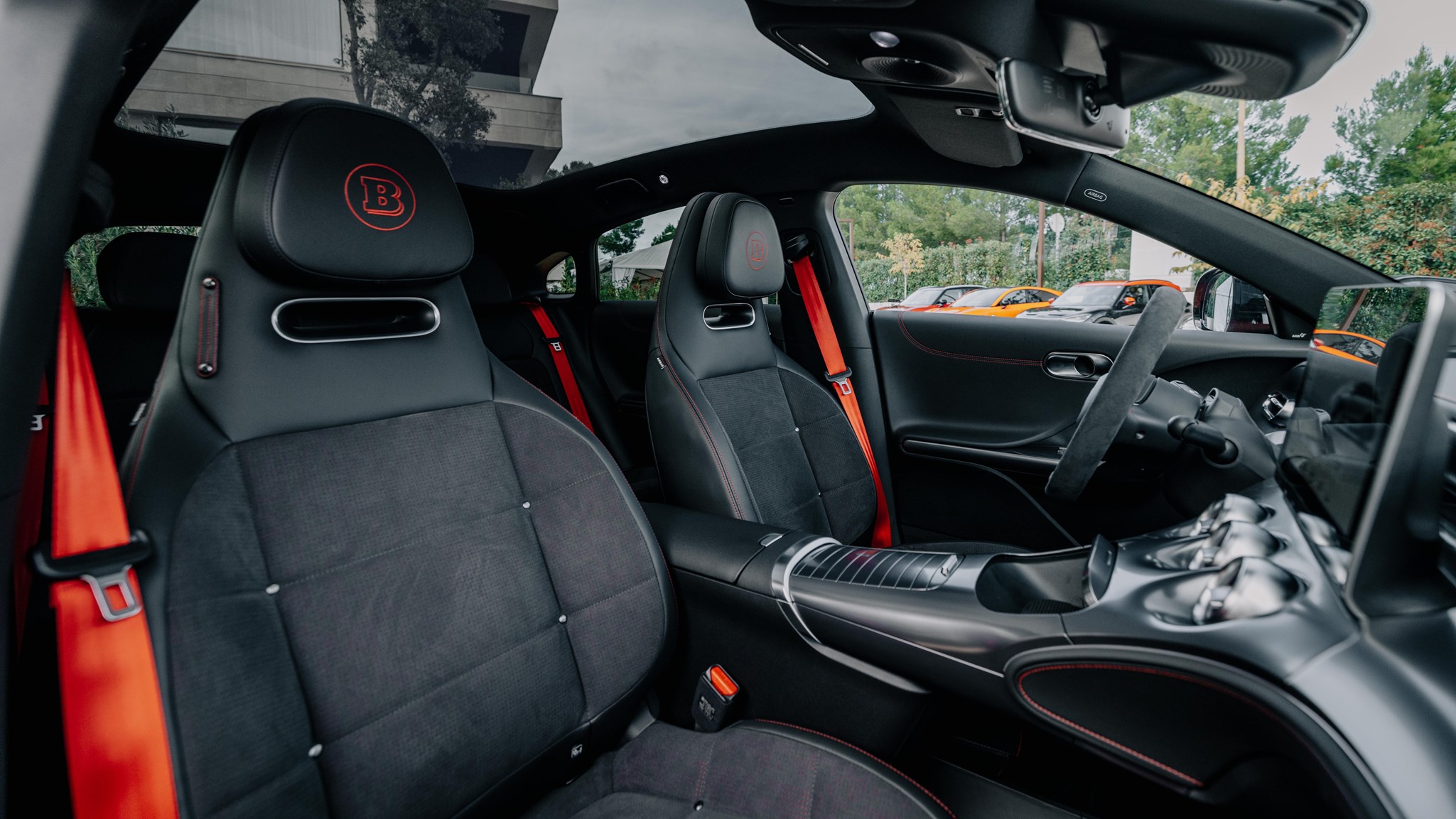► Our full Smart #3 review
► We drive Brabus and regular 3s
► Road test, prices, specs and verdict
If you thought Mercedes’ funsize brand was moving away from its roots with the #1, you might want to click away now rather than read about the Smart #3. Whereas the #1 clung to the original Smart’s space efficiency – it was a sub-4300mm long SUV with E-Class levels of space after all – the #3 is one of those oh-so-desirable coupe SUVs that also happens to be fully electric.
Before you comment you’d rather eat your own feet than drive something like this, sales figures of these SUVs made less practical suggest that you are very much in the minority here. At least Smart hasn’t angled the tailgate and left it at that. The roofline and suspension are lowered, wheelbase stretched and there’s a more rakish nose and tail, too.
We’ll let you decide how successful Smart has been, although it’s worth pointing out that it’s more handsome in the metal than on paper. The rest of the #3 is a lot more familiar – no surprise given that it’s on the same platform as the #1.
Number crunching
A 66kWh battery makes up the bulk of the range providing between 258 and 283 miles of range depending on motor and specification. The entry-level 49kWh model has similar straight-line performance to the single motor, but only just tops 200 miles of range in official WLTP testing. All figures are up slightly on the #1 thanks to the #3’s better aerodynamics.

Both batteries can get from 10-80% charge if you can find a potent enough rapid charger (130kW for the smaller pack, 150kW for the big bugger) in less than 30 minutes, and our experience of the #1 suggests the 66kWh pack will return over 200 miles of range without too much stress. Even so, expect a Hyundai Kona Electric to be even more efficient.
All single motor versions can get from 0-62mph in a brisk 5.8 seconds, making it more than quick enough for most folk. However, we’ve so far only tried the twin-motor #3 Brabus which ups power from a generous 268bhp to an unhinged 422bhp. With ‘Rocket Start’ engaged, Smart claims the Brabus will go from 0-62mph in a mere 3.7 seconds, a figure we can fully believe.
What’s the #3 like to drive?
Where the #1 Brabus was borderline scary when you tried to use the performance on squiggly roads, the #3 is quite entertaining. Rather than try to make it feel like more humdrum versions in most scenarios, Smart has listened and stiffened things up a bit. The changes aren’t huge, but with the lower ride height and roofline factored in there’s a far greater feeling of control.

Instead of flopping into corners before clumsily scrabbling out again, the #3 Brabus feels much sharper. There’s less roll and a much better purchase on the surface, while you can really feel it working the rear motor hard to help the car rotate on corner exit. It won’t do silly skids even with everything off, but there’s enough movement to make it feel a bit more engaging. Think Golf R (minus the drift mode) and you won’t be a million miles away.
The steering isn’t exactly brimming with feel, yet there’s a weight and precision that builds confidence and helps you place the car exactly where you want it. Ride comfort does suffer slightly, but it’s acceptably firm given the sporty remit and didn’t once generate a grimace when hitting one of Mallorca’s many potholes.

If that all sounds good, let me add a large caveat. All Brabus models on the launch were fitted with Michelin Pilot Sport 4 tyres, but they’ll ship on less focussed Dunlop Sport Maxxes. If you want Michelins, they’re a dealer-fit option.
How’s the interior?
Inside, the dash is largely the same as the #1, no bad thing at all. There’s a good spread of squishy plastics and attractive trims, while everything feels well screwed together. Storage up front is good, and the cubby under the central armrest is even air conditioned to stop your supply of road chocolate going all melty.
All versions get a panoramic roof as standard that opts for a heavy tint rather than a roller blind, saving weight and improving headroom. It’s not what you’d call generous, but it should be more than adequate for most. Legroom impresses given the length of the #3, but the boot is on the small side and can’t be extended by sliding the rear bench forward like in the #1.

Verdict
Fast, fun and still reasonably practical, the #3 shows Smart is listening to criticism and doing their best to address it. It’s certainly a lot more fun than the similarly fast but usefully cheaper MG4 XPower, and has a far more pleasant interior with more generous equipment levels.
Range and efficiency isn’t amazing, but by the same token it should be enough for most people. Besides, the rapid charging times make longer distance drives less of a chore. Just remember not to enjoy yourself too much, the range does unsurprisingly plummet if you’re pressing on.